| Botanical Name |
|
| Family |
Asteraceae - The daisy family. |
| Pronunciation |
oh-THON-uh trip-lee-NER-vee-uh |
| Common Name(s) |
|
| Plant Group |
- Succulent A plant having fleshy stems or leaves often adapted to dry conditions.
|
| Plant Size |
- Large
| Tree | 18m to 25m |
| Shrub | 3m to 4m |
| Perennial/ground cover | 75cm to 1m |
| Bulb | 80cm to 1.2m |
| Succulent | 1m to 1.5m |
- Medium to Large
| Tree | 15m to 20m |
| Shrub | 2m to 3m |
| Perennial/ground cover | 60cm to 75cm |
| Bulb | 60cm to 1m |
| Succulent | 60cm to 1m |
|
| Position |
- Canopy Shade Canopy shade is found below closely grown trees where some light filters through. Ideal for the protection of herbaceous plants.
- Light or Dappled Shade Found below trees with sparse, open foliage. Ideal for the protection of herbaceous plants.
- Partial Shade The area is in shade for part of the day and in full sun for part of the day.
- Sun The area is in full sun for all or most of the day, all year round.
|
| General Information |
- Drought Tolerance: High The plant is well adapted to arid conditions; it can survive long periods of drought and high temperatures without extra water.
- Evergreen Plants that have leaves all year round.
- Frost: Tender A plant that will not survive any frost or low winter temperatures.
- Roots Non-invasive Safe to plant near pools, paving, walls or buildings.
- Sand tolerant Plants adapted to survive in nutrient poor, very sandy soils.
- Water Wise Plant species originating from low rainfall regions that require less water to survive and thrive than other plant species.
|
| Specific Information |
Othonna triplinervia is a succulent shrub with thick, fleshy stems and large, three veined leaves, most of which are clustered at the ends of the branches. It is often found growing on cliffs or in dry stony soil, varying in size from 40 cm to 2 m in height.
|
| Ad Break |
|
| Flowers |
| Description |
small daisy, five petals, in very loose groups of about 6 to 15 flowers, on thin stems
|
| Season |
- Spring to Summer Plants will seldom bloom for the entire season as given in the list, but should flower during a period within these parameters.
|
| Colour |
|
| Growth Rate |
- Moderate to Fast Specifying growth rate can be very misleading as there is considerable variation of growth rate depending on type and species of plant, available water, supplementary feeding, mulching and general care, as well as the plants suitability and adaptability to the garden environment.
|
| Plant Uses |
- Accent or Focal Point A plant used to attract the attention because of its colour or form.
- Attracts bees, butterflies or other insects This plant attracts insects which can be food for birds or other creatures in your garden.
- Border A strip of ground, at the edge of a driveway or path in which ornamental plants or shrubs are planted.
- Container Trees, shrubs and ornamental species that can adapt to growing in a restricted environment.
- Filler Either a fast growing tree or shrub used temporarily to fill in an area while the permanent plants grow to a desired size, or a plant used to fill gaps in borders or beds.
- Foliage Plant Plants grown because their foliage is colorful or unique. Many of these plants have insignificant flowers.
- Rock Garden An area constructed of larger rocks, arranged naturally, to emphasise the use of stones as a main element. Generally plants used do not need a lot of care.
- Suitable for bonsai A shrub or tree that lends itself to being dwarfed.
- Suitable for coastal gardens Plants adapted to dry, sandy soil, forceful wind, limited rainfall and intense sunlight.
- Suitable for smaller gardens Such plants do not have invasive root systems, remain small or controllable and can often be grown in containers.
- Wild Garden An indigenous garden planted for the benefit of wildlife and birds. Provides food, water, a variety of mini-biomes and no poisonous chemicals are used.
|
| Distribution and Habitat |
in the Eastern Cape Province, from Jansenville to East London, but principally in the Albany region, on cliffs, in Albany thicket and scrubby bush
|
| Planting Suggestions |
Plant in well drained soil. Tolerates more moisture than most succulents but must not be waterlogged. Growing points can be nipped off to increase branching. Propagate from seeds or cuttings.
|
| Lorraine's Garden Notes |
This is a delightful plant which can be used in any frost free garden. There is very little information about it and it is underutilized as a garden subject. It is grown in Europe and the U.S.A. only as a bonsai as it does form a caudex of sorts. I am really puzzled that this species has not become more popular, considering its attractive foliage and ease of growth. All the information above is entirely from my own observations of the plants in my garden and in the wild.
|
| Medicinal Uses |
|
| Ad Break |
|


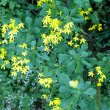
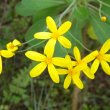
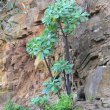
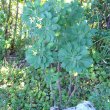
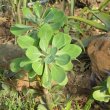
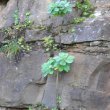
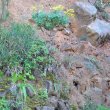


Comments
Couldn't agree more! Such a
Couldn't agree more! Such a lovely plant, I only know it from the Matthews rockery at Kirstenbosch. Thanks Lorraine for a most informative website. I can only imagine the number of hours that go into writing the info, loading pics etc.
Othonna triplinervia
Hi Marijke
I am still puzzled as to why this species has not become popular. Perhaps because the specimens in the veld are usually small, unattractive little things that do not inspire confidence, but the way they grow on the cliffs of the Blaaukrantz pass shows their potential.
Thanks for your positive comment - much appreciated. Yes it does take a great deal of time, but very rewarding, but I must admit that my favourite part is taking the photos in the first place.
Kind regards
Lorraine
growth & flowering periods
I have been growing a small specimen in a zone 7 greenhouse for 9 months. Should I expect this plant to put out new leaves year around? My plant just put out a small flower, is it summer flowering? Any info is greatly
appreciated!
Othonna triplinervia
Hi Bill
Leaves: like any evergreen plant, this plant will grow new leaves and lose leaves year round.
Flowering: see text above under headings: Flowers - Season
As mentioned in the above text, information about this plant is scarce. I have included all I know about about it in the above text, based mostly on my own experience as well as what little I found in my source materials.
I am afraid there is nothing more I can add that I have not already included above.
Kind regards
Lorraine
Discuss this plant
Share knowledge, ask a question or give an experience.